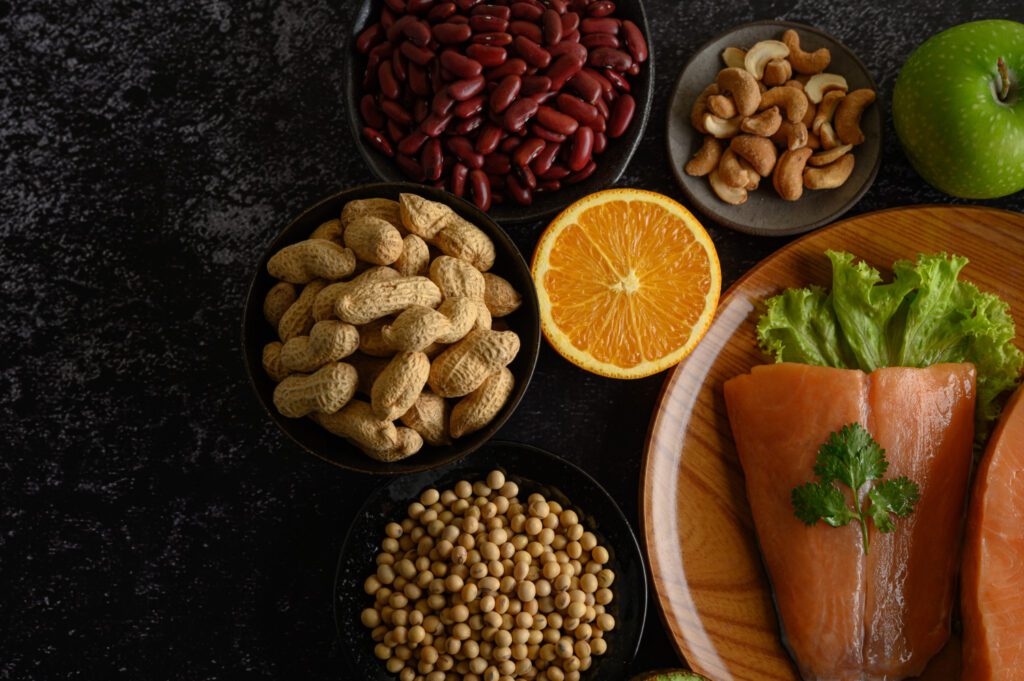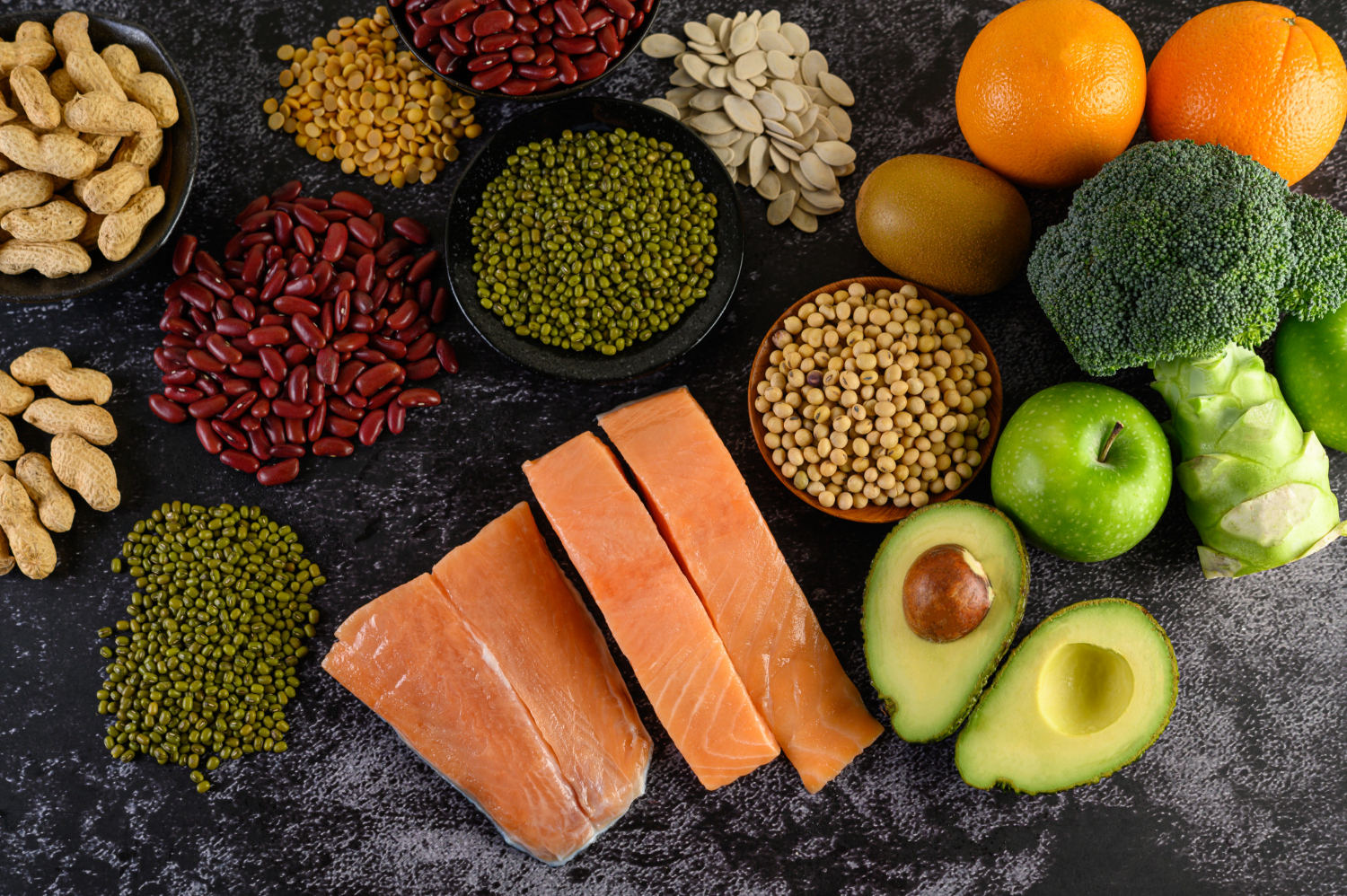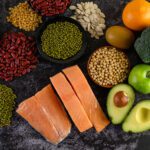Here, we are sharing information on the topic “what are the plant protein source.” With fewer calories than animal products, plant-based diets can be excellent sources of protein and other nutrients.
Certain plant-based foods, like quinoa and soy beans, are complete proteins, meaning they have all nine of the essential amino acids required by humans. Eating a diversified diet is crucial since some people are lacking in certain amino acids.

what are the plant protein source
1. Tempeh, and tofu
-
Tofu, tempeh, and edamame are some of the plant-based foods that are high in protein when following a vegan diet.
-
One of the best sources of protein for a plant-based diet is soy-based products. Depending on how the soy is processed, the protein amount varies.
-
About 10 g of protein are found in ½ cup of firm tofu (soybean curds).
-
A quarter-cup of edamame beans, or immature soybeans, provides 8.5 grams of protein.
-
A quarter of a cup of tempeh has roughly 15 g of protein.
-
Tofu may be a flexible addition to a meal because it absorbs the taste of the dish it is cooked in.
2. Grams of lentils
-
Both red and green lentils are high in fiber, protein, and essential minerals, including potassium and iron.
-
For every ½ cup, cooked lentils provide 8.84 g of protein.
-
Adding lentils to your lunch or dinner routine is a terrific way to get more protein. To add more protein to stews, curries, salads, or rice, simply add them.
3. Nuts
One-half cup of almonds has 16.5 g of protein. They also include a healthy dose of vitamin E, which is excellent for the eyes and skin.
4. Almonds
-
Rich in protein and heart-healthy lipids, peanuts may help maintain a healthy cardiovascular system. For every ½ cup, they include about 20.5 g of protein.
-
At 3.6 g per tablespoon, peanut butter is also high in protein, which makes peanut butter sandwiches a full protein snack that is good for you.
5. Pulses
-
The protein content of cooked chickpeas is high, with about 7.25 g per ½ cup.
-
There are many different recipes for chickpeas that can be found online. They are very adaptable and may be served hot or cold. For example, they can be baked in the oven with paprika spice or used to stews and curries.
-
Hummus, a spread produced from chickpea paste, can be used in sandwiches as a high-protein, nutritious substitute for butter.
6. Grams of lentils
-
Both red and green lentils are high in fiber, protein, and essential minerals, including potassium and iron.
-
For every ½ cup, cooked lentils provide 8.84 g of protein.
-
Adding lentils to your lunch or dinner routine is a terrific way to get more protein. To add more protein to stews, curries, salads, or rice, simply add them.

Animal versus plant protein
A minimum daily protein consumption of 0.8 grams (g) per kilogram of body weight, or roughly 60 g for a person weighing 165 pounds, is advised by the Academy of Nutrition and Dietetics. More protein may be required by older people, those trying to gain muscle, and pregnant or nursing mothers.
Naturally abundant in amino acids, protein is an essential component found in animal products like meat, eggs, and milk. For those who eat animal products, this makes it simpler for them to get the recommended daily intake of protein.
Frequently asked questions
(what are the plant protein source)
What vegetable is high in protein?
Answer: Twelve Lean Vegetables
Vegetables high in protein include edamame, chickpeas, corn, spinach, and artichoke hearts. Aim to eat a range of foods throughout the day, including legumes, whole grains, nuts, seeds, and vegetables, to ensure that your body gets all the amino acids it needs.
How do I get 100 grams of protein without meat?
Answer: One hundred grams of protein for vegans
Two grammes (7 grams) of peanut butter Hemp seeds, one tablespoon (4 grams) Ten grams or ¼ cup of protein granola One scoop (20 grams) of plant-based protein powder.
Which Dal has the highest protein?
Answer: Moong Dal (Green Gram): When cooked, moong dal has about 24 grams of protein per 100 grams, making it one of the highest protein dals. 2. Masoor Dal (Red Lentils): When cooked, masoor dal yields roughly 25 grams of protein per 100 grams. It cooks quickly as well.
What is plant protein powder?
Answer: Bon Appétit: The Greatest Vegan Protein Powder (2024)
Almost any grain, legume, or seed can be used to make vegan protein powder, including watermelon, hemp, and brown rice seeds. The highest-quality, most bioavailable protein will come from “vegan protein powders based on legumes like soy and pea protein powder,” claims Wolfram.
Conclusion
(what are the plant protein source)
Plant-based protein sources, including legumes, grains, nuts, and seeds, offer diverse and nutritious alternatives to animal-derived proteins. Rich in fiber, vitamins, and minerals, these sources often contain lower levels of saturated fats and cholesterol. Incorporating a variety of plant proteins into one’s diet supports overall health, while also promoting environmental sustainability and animal welfare. Embracing plant-based protein sources can contribute to a balanced and nutritious diet, offering benefits for both personal well-being and the broader ecosystem.
So, this is how the topic “what are the plant protein source” has been addressed.
- For more information related to these topics, click here.
- You may also visit our Instagram page by clicking here.
- You may also visit our YouTube channel by clicking here






